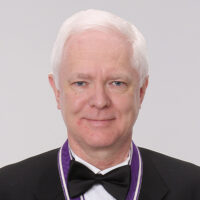
2008 Kyoto Prize Laureates
Life Sciences and Medicine(Molecular Biology, Cell Biology, Systems Biology, etc.)
/ Molecular Biologist
1952 - 2013
Distinguished Investigator, Samuel Lunenfeld Research Institute of Mount Sinai Hospital ; University Professor, University of Toronto
Thinking about How Living Things Work
2008
11 /11 Tue
Place:Kyoto International Conference Center
Signal Network in Biological Functions
2008
11 /12 Wed
13:00 - 17:00
Place:Kyoto International Conference Center
Dr. Pawson proposed and proved the concept that the unique adapter structure exists in signaling proteins, and that the binding of adapters to specific phosphotyrosine-containing domains induces cascades of intracellular signaling that controls cellular growth and differentiation. This concept has established one of the basic paradigms of signal transduction and significantly contributed to the subsequent development in life sciences.
*This field then was Field of Life Sciences (Molecular Biology, Cell Biology, Neurobiology).
Dr. Anthony James Pawson discovered a new mechanism of intracellular signal transduction, revealing an important molecular infrastructure that controls cellular growth and differentiation. In the late 1970s, the autophosphorylation of oncogene products and growth factor receptors was found at specific tyrosine residues, but the molecular mechanism of signal transduction beyond tyrosine phosphorylation remained unknown. Dr. Pawson demonstrated that intracellular signaling proteins carry a domain with a unique modular structure, which he termed Src homology 2 (SH2), and that this domain recognizes and binds the phosphotyrosine and the flanking amino acids of target molecules to induce cascades of intracellular signaling that facilitates cellular growth and differentiation.
Based on his finding that not only the catalytic domains (tyrosine kinases) but also the flanking domains in oncogene products are necessary for the transformation (i.e., cancer-like behavior) of cells, Dr. Pawson discovered that oncogene products and signaling proteins share a common sequence consisting of approximately 100 amino acid residues, which he termed SH2, and that the SH2 domain takes part in the interaction between tyrosine kinases and their substrates. He proposed that SH2 domains act as adapters that mediate the binding with cell membrane receptors and cytoskeletal proteins, by showing for the first time that there is a protein that can bind to the phosphotyrosine of a signaling protein, RasGAP. He disclosed that various SH2 domains can directly bind tyrosine-phosphorylated proteins in vitro. Furthermore, he demonstrated that the binding strength between SH2 domains and their target proteins varies, explaining that each SH2 domain binds to a specific tyrosine-phosphorylated protein to induce specific intracellular signaling cascades.
These achievements by Dr. Pawson laid out the scheme that adapter molecules facilitate successive protein-protein associations like the Lego blocks, thereby participating in the fundamental mechanism of signal transduction that controls cellular growth and differentiation, as well as development of cancer. Consequently, the proposal and proof of the concept for adapter molecules by Dr. Pawson have established one of the basic paradigms in signal transduction and contributed significantly to the subsequent development in life sciences.
For these reasons, the Inamori Foundation is pleased to present the 2008 Kyoto Prize in Basic Sciences to Dr. Anthony James Pawson.
Profile is at the time of the award.